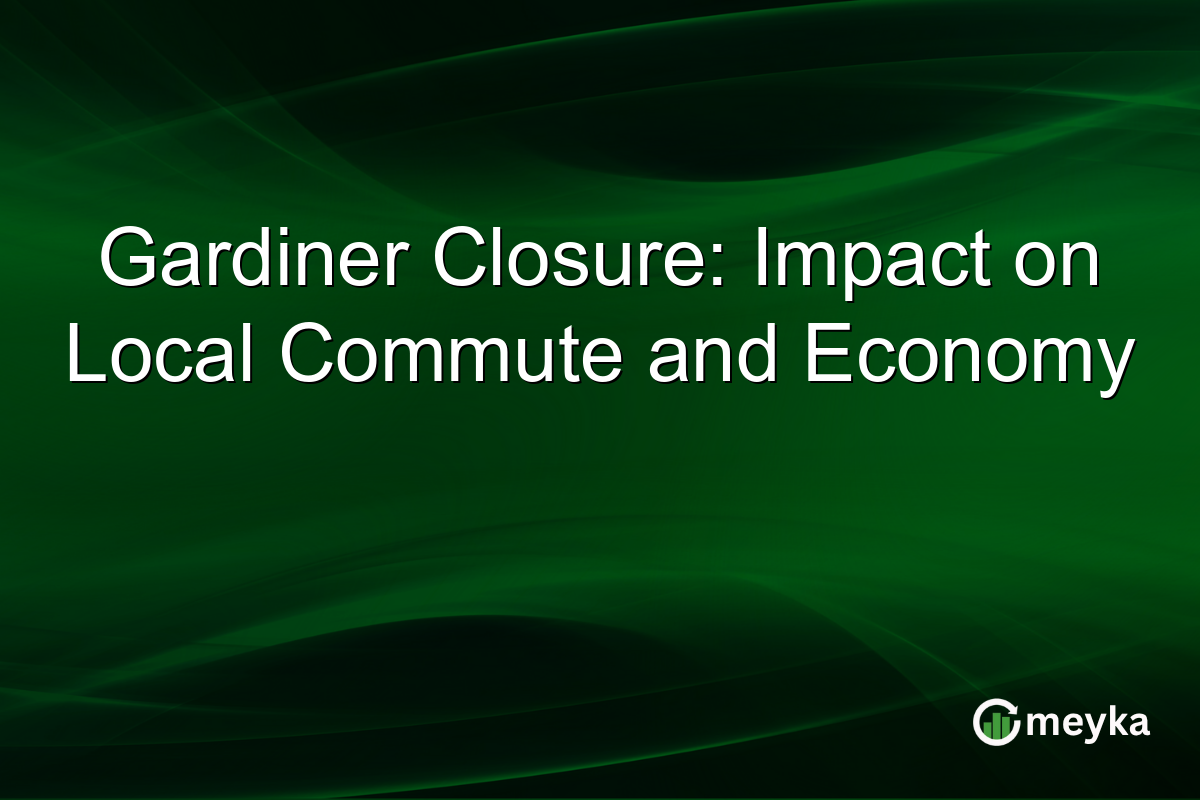Gardiner Closure: Impact on Local Commute and Economy
The recent closures in Gardiner have disrupted local traffic patterns, causing significant inconvenience for commuters. These disruptions have not only affected daily commutes but also sparked concerns about the economic impact of road closures on businesses reliant on steady traffic flow. Understanding these changes is crucial for future infrastructure planning and ensuring economic resilience in the region.
Understanding the Local Traffic Disruption
The closure in Gardiner has led to increased congestion on alternative routes, intensifying local traffic disruption. Commuters have found themselves spending more time on the road, with delays sometimes stretching to an additional 30 minutes daily. While the direct impact is felt by drivers, the ripple effects are seen across the community.
For residents, these disruptions affect daily routines, from school drop-offs to reaching work on time. Businesses, especially those dependent on foot traffic, notice fewer customers during peak hours. This issue emphasizes the need for effective detour planning and enhanced public communication to mitigate inconvenience.
Economic Impact of Road Closures
The economic impact of road closures in Gardiner extends beyond mere traffic delays. Retailers and services in the vicinity report a noticeable dip in customer count due to decreased accessibility. For businesses along these routes, reduced foot traffic translates to lower sales, creating a significant concern for the local economy.
In addition to immediate sales losses, prolonged closures can lead to decreased investment in the region. Potential investors may view continuous infrastructure issues as a risk, impacting long-term economic growth. This scenario underscores the importance of strategic planning and regular infrastructure assessments to support local economic health.
Gardiner Commuting Issues Highlight Infrastructure Needs
Gardiner’s commuting issues highlight broader infrastructure challenges that need addressing. Discussions around these closures must focus on creating durable solutions that prevent future disruptions. Investing in road maintenance and exploring alternative transit options, such as improved public transportation, are necessary steps toward resilience.
Local authorities must also engage with residents and businesses to understand unique needs and develop strategic responses. Collaborative planning can lead to smarter, more sustainable infrastructure solutions that balance growth with community comfort and economic prosperity.
Final Thoughts
The Gardiner road closures have underscored pressing infrastructure and economic concerns in affected areas. While traffic disruptions have inconvenienced many, the broader economic impact is equally concerning. Businesses face reduced customer visits, highlighting the delicate balance between infrastructure management and economic stability.
For Gardiner, addressing these challenges calls for comprehensive planning and execution. Proactive investment in infrastructure and transparent communication with the public are imperative. By fostering collaboration between stakeholders, Gardiner can create a resilient infrastructure that supports local business growth even during unforeseen disruptions.
As communities navigate these challenges, platforms like Meyka offer valuable insights and predictive analytics to guide investment decisions in uncertain times, helping to anticipate and mitigate the effects of such disruptions.
FAQs
The Gardiner closure has increased traffic congestion on alternative routes, adding up to 30 minutes to commute times, affecting work and daily schedules.
Businesses reliant on commuter traffic experience fewer customers and reduced sales, impacting local economic stability and potential long-term growth.
Authorities should invest in infrastructure maintenance, enhance public transit options, and engage with the community for strategic planning and solutions.
Disclaimer:
This is for information only, not financial advice. Always do your research.






